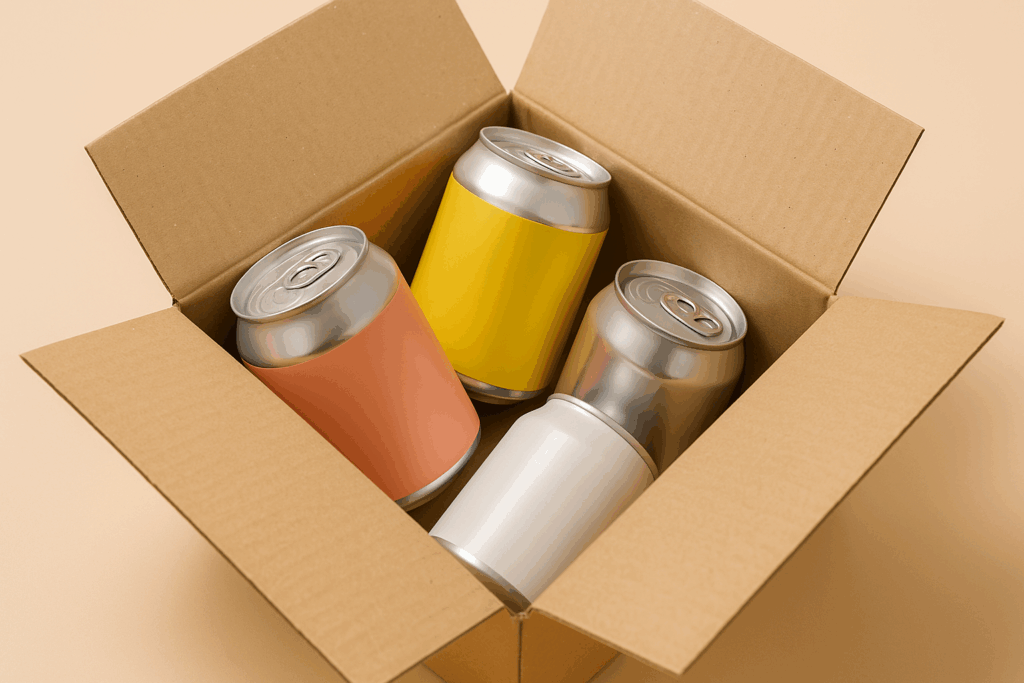In today’s competitive market, great products often go unnoticed without the right advertising strategy. For food and beverage brands, standing out means more than shelf placement, it’s about commanding attention across physical and digital channels.
In this blog, we’ll dive into actionable CPG advertising strategies that are working right now, backed by real-world examples from bold brands that are turning attention into sales.
What Is CPG Advertising Today?
Traditionally, CPG advertising referred to mass-market efforts such as TV commercials, print coupons, and broad in-store promotions aimed at moving volume quickly. But in 2025, the landscape is different.
Now, CPG advertising spans Instagram reels, shoppable ads, retail media networks, influencer collabs, branded content, and even geo-targeted digital billboards. In other words, it’s no longer about reach alone, but it’s about relevance.
For CPG brands, this shift has also meant investing more in content creation and community building over one-off promotions. Packaging is now part of the ad. Store displays are designed with Instagram in mind.
According to McKinsey, modern CPG marketers must deliver the right content and offer to the right consumer at the right moment, leveraging advanced analytics and personalization at scale.
🔍 Tip: Your CPG brand doesn’t need a massive ad budget. What it needs is creativity that speaks the consumer’s language and delivers it where they’re already looking.
Why Most CPG Advertising Fails to Stand Out
The reason CPG advertising doesn’t stand out is that a lot of it has the same appearance, voice, and tone.
These CPG ads tend to blend in rather than stand out due to their overused taglines and over-reliance on product benefits like “natural,” “tasty,” or “affordable.”
The absence of bold creative direction and smart storytelling is the issue, not the product.
Compare two tea brands, for instance. One is based on a modest lifestyle advertisement featuring a woman in a meadow drinking tea, while the other brand has bizarre advertisements with themes that stimulate the brain and eye-catching color schemes that are shown on digital shelves. Can you guess which one receives more shares?
When brands play it safely, they become invisible. As Forbes discusses, embracing bold and unconventional creative strategies can be a key driver for CPG brands to differentiate themselves and capture consumer attention.
Common CPG advertising challenges include:
- Playing to everyone while not trying to please anyone
- Reiterating catchphrases without making any distinctions
- Ignoring performance data or audience testing
- Ignoring packaging coherence and brand tone
- Selecting the incorrect media outlets for the intended audience
🤔 Ask yourself: Would your ad make someone stop scrolling—or does it look like everyone else’s?
What Drives Consumer Choices
Whether it’s at a checkout counter or a late-night Instagram scroll, consumers are constantly choosing between brands and often without even realizing it. In that split second, your packaging, message, and mood must speak louder than the competition.
That’s where smart CPG advertising comes in. It’s not just about what you say, but how fast and how visually you say it. When you just have a second to create an impact in a competitive market, creating a distinctive and memorable brand identity is just as important as having a solid design.
For CPG brands, this is a reminder that your first impression, either visually or emotionally, will often determine whether your product is added to a cart or overlooked entirely.
To stand out in both physical and digital spaces, consider the things listed below:
- Designing packaging that can double as ad creative
- Using bold or unusual color combinations
- Building a consistent brand tone across touchpoints
- Creating ad visuals that evoke a lifestyle, not just a product
💡 Pro Tip: Great advertising starts at the design level. Don’t separate your visual identity from your marketing strategy, both of them should evolve together.
What’s Working in CPG Advertising Right Now?
Today’s most effective campaigns merge performance marketing with personality, creating scalable content that still feels handcrafted.
A notable trend is the increase in shoppable video advertisements. TikTok and Instagram Reels have been used by CPG brands with this strategy to increase direct conversions as well as awareness.
Another way that marketers are changing how they approach consumers at the point of intent is through retail media networks. In grocery apps, CPG brands use retail media to offer tailored promotions that keep their items at the forefront of consumers’ minds when they are ready to make a purchase.
Other tried-and-true strategies include micro-influencer seeding initiatives. Marketers sought out business owners who shared their beliefs to expand their message at a low cost and with high trust. For a deeper understanding of these evolving strategies, read our blog on CPG marketing strategies for brand success.
Here’s a quick look at strategies worth testing:
|
Strategy |
Why It Works |
| Shoppable video ads |
Fast path from awareness to purchase |
|
Retail media targeting |
Contextual ads near buying decision |
| Micro-influencer collabs |
High engagement from tight-knit audiences |
|
Branded UGC content |
Builds authenticity and social proof |
|
Experiential activations |
Memorable offline moments for online buzz |
How Brands Tell Stories That Sell
CPG advertising succeeds when storytelling and audience targeting work hand in hand. A well-crafted narrative captures attention, but it’s the strategic alignment with audience data that drives real conversions.
Modern programmatic advertising platforms allow brands to personalize campaigns based on demographics, interests, and behaviors. This means a single campaign framework can speak to multiple segments effectively.
For instance, a premium coffee brand might highlight sustainability and ethical sourcing for Gen Z consumers, while emphasizing speed and convenience for time-strapped parents.
By combining emotional appeal with data-driven precision, brands can deliver marketing messages that resonate and convert.
“Marketing is no longer about the stuff that you make, but about the stories you tell.”
— Seth Godin
Smart CPG Advertising Strategies for Growing Brands
Once a CPG brand has found product-market fit, the challenge becomes scaling while retaining authenticity. This is where advanced techniques come into play, when done effectively, they have a greater impact but demand a somewhat higher budget.
Growth-stage tactics to consider:
- Running A/B tests (comparing two or more versions) of ad creatives on a large-scale using platforms like Meta (Facebook/Instagram) or YouTube to see which version performs best.
- Combining your own customer data with insights from retail media platforms to create more accurate and effective ad targeting.
- Teaming up with other brands that share your values to create special, limited-time products or campaigns.
- Running billboards or poster ads (OOH = out-of-home) in city areas that include QR codes people can scan to instantly add products to their online shopping cart.
- Building your own internal team or studio to create content (like videos, photos, and ads), so you can save money and react quickly to marketing needs.
📦 Pro Tip: As your brand grows, creativity becomes your greatest advantage. Instead of simply boosting your budget, focus on enhancing your storytelling.
CPG Advertising That Stands Out Starts with Strategy
In a market where consumers are bombarded with choices, CPG advertising isn’t just about visibility, it’s about memorability. The most successful brands today are those that commit to being specific, emotionally engaging, and consistent at every touchpoint, from online channels to in-store shelves.
Are You Ready to Stop Blending In And Start Standing Out?
Get in touch with MAVRK Studio to explore custom creative and strategy services designed for modern CPG brands.





